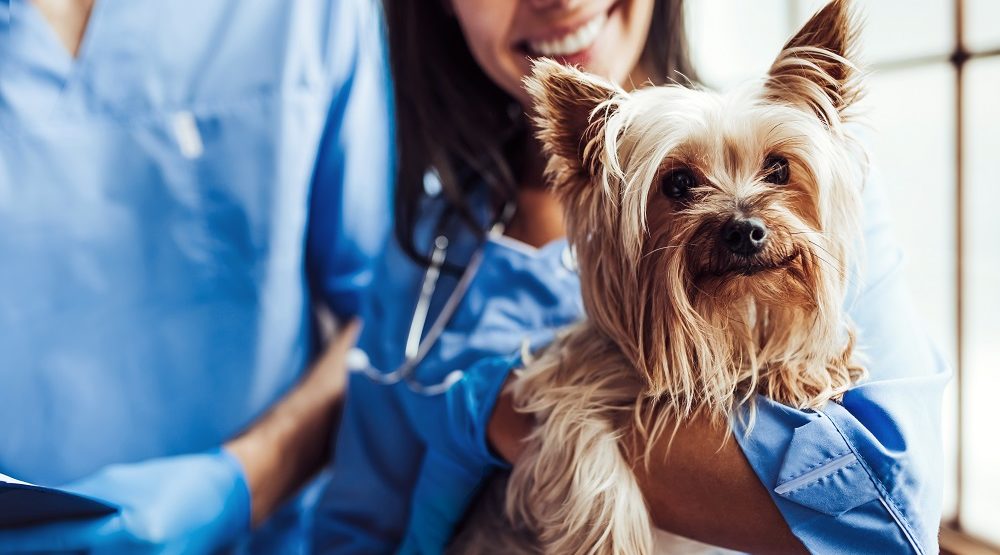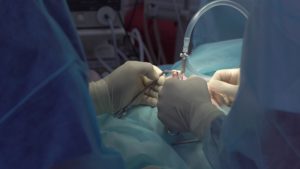Minimally Invasive Surgery: The Advantages of Cutting-Edge Procedures for Your Pet

When your pet needs surgery, only the best will do, so we continuously seek ways to minimize discomfort, decrease anesthesia time, and speed healing. We are able to use minimally invasive surgical techniques for many procedures, and pets are enjoying the advantages of this cutting-edge technology. Often requiring advanced equipment and the expertise of board-certified veterinary surgeons, minimally invasive surgery is typically offered only at large veterinary referral and specialty hospitals. Gulf Coast Veterinary Services is excited to offer minimally invasive procedures for many patients, whose family veterinarians refer them to our hospital for complicated or difficult surgeries.
What is minimally invasive surgery for pets?
Minimally invasive surgery typically uses an endoscope or arthroscope to visualize internal body structures, instead of making a large incision to access the area. Endoscopes and arthroscopes contain a high-definition camera on the end of flexible or rigid tubing that can be inserted through a small incision, typically less than an inch, into a body cavity, such as the thorax, abdomen, or a joint. The camera transits an image onto a screen that the surgeon can view, and can infuse air or water into the area to improve visualization. More instruments can be inserted into the body cavity through additional small incisions, or through the endoscope or arthroscope tubing to make incisions, collect tissue samples, and place ligatures.
What advantages can minimally invasive surgery offer my pet?
Since the incisions are much smaller than those used in traditional surgery, pets who experience minimally invasive surgery have many advantages, including:
- Less tissue trauma — Smaller incisions mean less tissue trauma, and less healing that must take place following the procedure. When procedures are performed endoscopically or arthroscopically, there is often less manipulation and disruption of nearby tissues and organs that can increase pain and healing time. For example, traditional thoracic surgery involves cutting the sternum or ribs to gain access to the lungs or heart, whereas minimally invasive thoracic surgery uses only small skin and muscle incisions.
- Less bleeding — Minimal blood loss occurs when incisions are reduced to millimeters, instead of several inches. For example, when a gastropexy procedure (i.e., a stomach tack to prevent gastric dilation volvulus) is performed endoscopically, several small incisions are made instead of one long incision, which typically can reach up to 12 inches.
- Faster surgeries — Making long incisions, ligating cut bleeding vessels, and suturing a long incision take precious surgery time. Smaller incisions save surgeons significant time, which means that your pet is anesthetized for a dramatically shorter period.
- Less pain — Smaller incisions and less tissue disruption cause less pain for your pet, so she will feel like herself again sooner, and will need less pain medication during her recovery.
- Faster recovery — Recovery time will be reduced, since your pet’s small incisions will heal quickly. Keep in mind, however, that internal incisions may need more healing time than skin incisions, and closely follow your veterinarian’s instructions regarding activity restrictions after surgery.
What minimally invasive surgeries can be performed on pets?
Many surgeries involving your pet’s abdominal and thoracic organs and joints can be performed with minimally invasive techniques instead of traditional surgery. Minimally invasive surgery procedures commonly include:
- Arthroscopic procedures
- Organ biopsy

- Lung lobectomy
- Pericardial window creation
- Gastropexy
- Ovariohysterectomy
- Ovariectomy
How do I know if minimally invasive techniques can be performed on my dog?
We use minimally invasive surgical techniques whenever possible; however, traditional surgery is still the best option for some procedures. Our surgery team will assess your pet’s condition, and help you decide on the best course of action for her particular situation.
Want to know if minimally invasive techniques can improve your pet’s surgical experience? Call us to schedule an appointment with our surgical team to find out.
